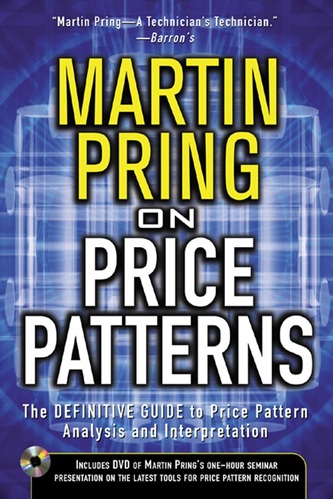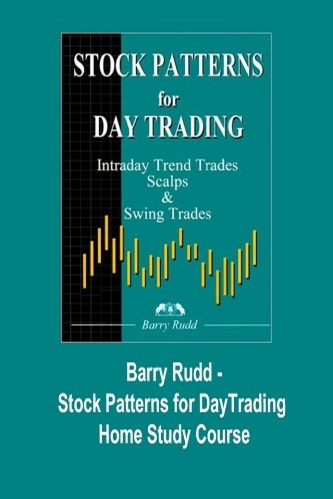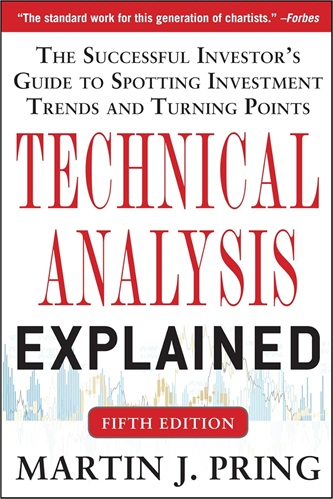Articles
The V-Bottom Buy Setup By Jamie Theiss
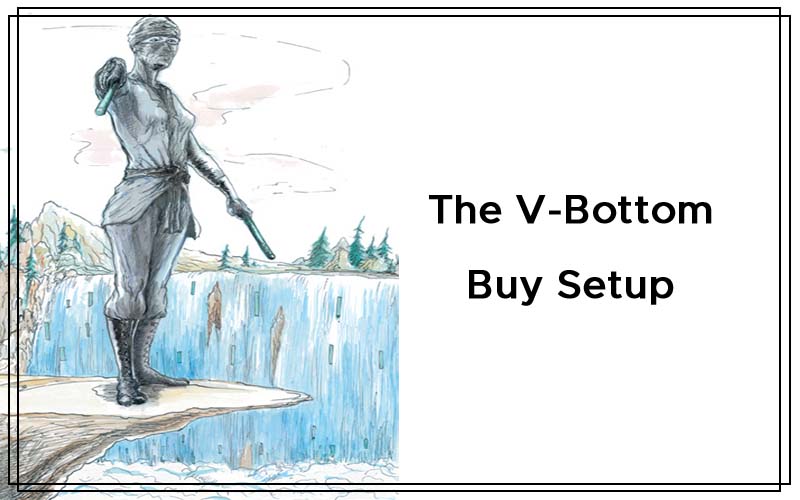
While at least 90% of trades should be taken in the direction of the trend, there are also opportunities to enter and profit from countertrend trades. Here’s one setup you can take advantage of. This article could also be jokingly titled “How To Properly Catch A Falling Knife.” While at least 90% of trades should be taken in the direction of the trend, there are occasionally legitimate opportunities to enter and profit from countertrend trades.
The V-bottom climactic selloff is one. Ideally, you would want to be short when these climactic selloffs occur, but you rarely are, as they seem to come out of nowhere and for no reason. As an example, let me show you a five-minute chart for daytrading. It is effective on most time frames and is particularly effective for swing trades using a daily chart. Try to stay away from the whippy one- and two-minute charts when using this technique, as there will be many false setups on these micro time frames.
POWER TREND OR SELLOFF?
First of all, it is important to differentiate between a power trend down and the fear-based selloff (Figure 1). The selloff has at least five consecutive red bars down. The bars also gain in size toward the end of the move as volume increases. The bars also resemble a vertical drop similar to a waterfall and show significant separation from the moving averages. Look at the distance from the moving averages in Figure 1 and the near-vertical fall of the bars.
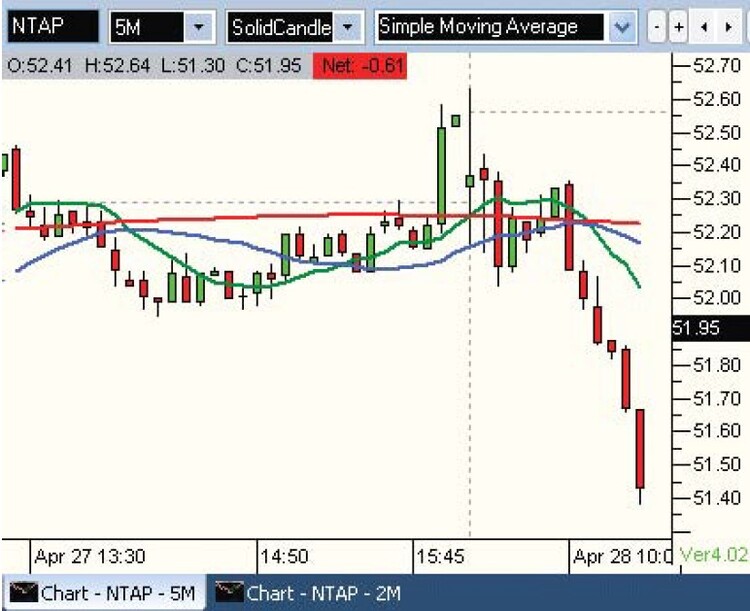
FIGURE 1: POWER TREND OR SELLOFF? A climactic selloff has at least five con-secutive red bars down. The bars also gain in size toward the end of the move as volume increases. The bars also resemble a vertical drop similar to a waterfall and show significant separation from the moving averages.
In a power trend down, the bars are generally the same size and they are closer to a 45-degree angle down, not vertical as in the selloff. And the bars tend to hug the moving averages, not run from them. In downtrends you want to look for entries to short, not go long against it.
Now in Figure 2 you see a neutral bar with almost equal size wicks (last bar). This shows indecision and a possible trend change. This bar could also be a narrow range bar or a bottoming tail bar, both of which are also strong reversal signals. In addition, it is close to the 10:30 reaction time of the market. Now we wait for the high of the neutral bar ($51.50) to be taken out by a green bar. The low of that neutral bar is $51.30 and our protective stop will be placed one cent below that at $51.29. You can now calculate your position size for this trade on the risk of 22 cents.
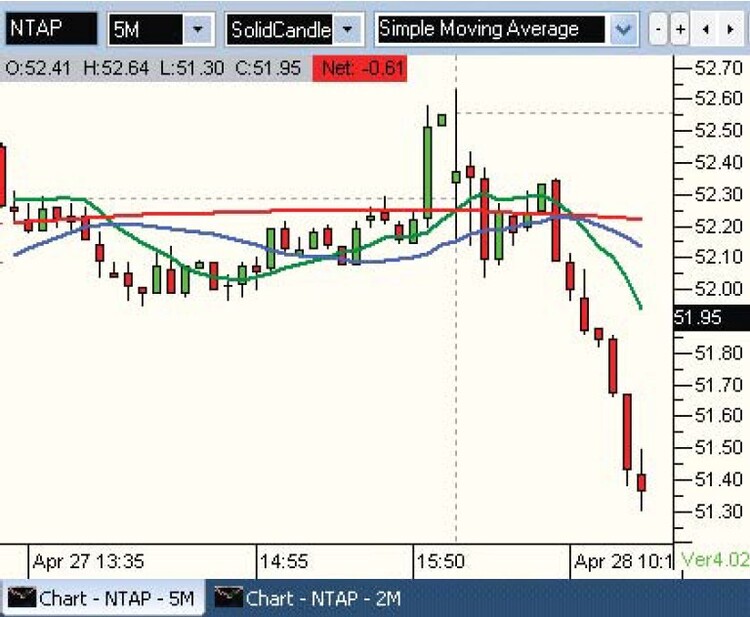
FIGURE 2: POSSIBLE TREND CHANGE? You want the high of the neutral bar to be taken out by a green bar. Your protective stop will be placed one cent under the low of that neutral bar.
Now look at Figure 3 and you see our entry event has been triggered at $51.51. Using, for example, $100 as our risk per trade, we have a share size of 450 shares (22 cents x 450 shares = $99), which I rounded down to 400 shares to keep an even lot size and to account for slippage and trade costs. We must honor this protective stop at $51.29. If the low of that neutral bar is taken out, there is a very good chance to see another leg down equal in size to the first move. So man up and take the stop if necessary and get ready for the second setup, which will come at a much lower price. You do not want to average down into this type of play.
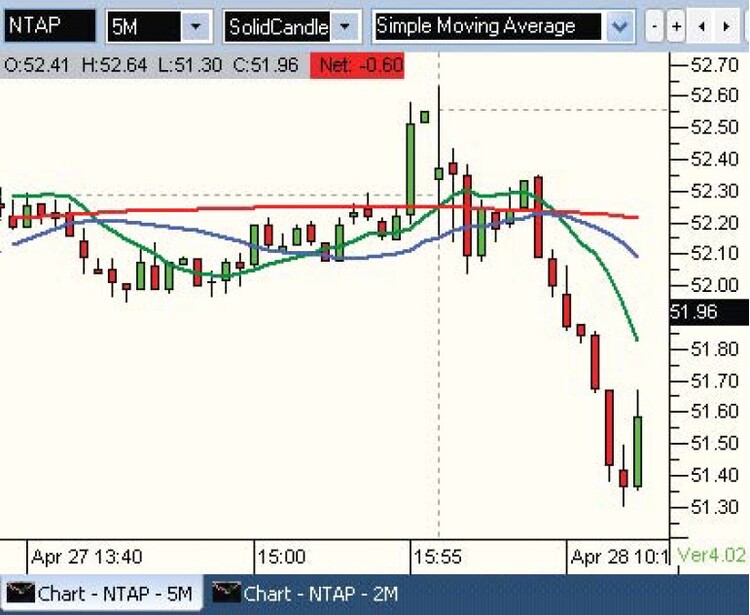
FIGURE 3: TRADE IS ENTERED. It is important to honor your protective stop, because if prices fall below the low of the neutral bar, there’s a strong chance that prices could go even lower.
Suggested Books and Courses About Chart Patterns
VSA Forex Trading Mentorship Course By Gavin Holmes
Original price was: $199.00.$27.29Current price is: $27.29.PROFIT TARGETS
Now that we are in this trade, what are our profit targets? If this is indeed a legitimate climactic selloff, there is a high probability that prices will reach the 20-period simple moving average (Sma) (blue) you see in Figure 4. There are many ways to trail and take profits. My personal trail method is to take half my position off at the eight-period SMA (green) and move my stop to breakeven, and then take the other half at the 20-period SMA. I know others who take their first half at the 20-period SMA and hold the back half for the possible homerun to the 200-period SMA (red). Other methods based on your trading plan can show equal or greater profits.
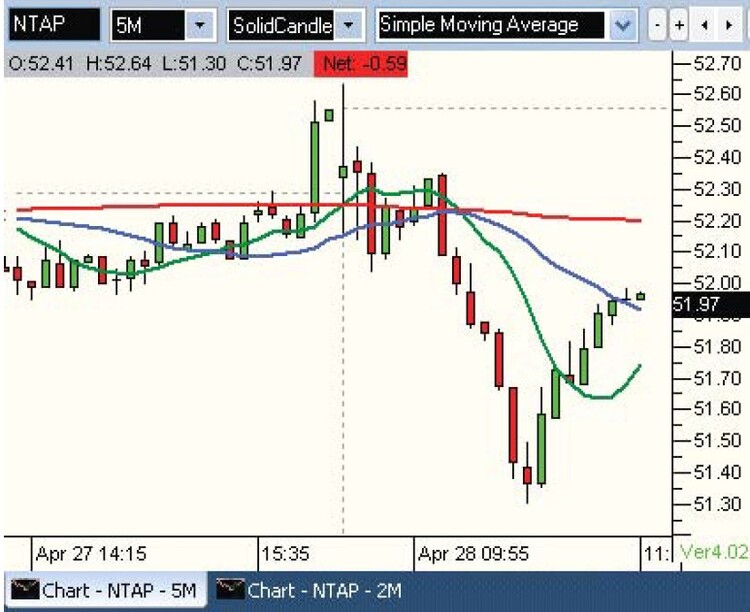
FIGURE 4: PROFIT TARGETS. There are many ways you could take profits in this trade. One is to take off half your positions when prices reach their eight-period SMA (green) and move your stop to breakeven, and then take the other half at the 20-period SMA.
My entry price was $51.51 with a 22-cent risk. That second green bar hit the first target eight-period SMA at a price of $51.73. I take half my position off, or 200 shares, at $51.71 for a 20-cent profit and hold the remaining half until the second target at the 20-period SMA is hit. That green bar’s high was $51.95, but I got out at $51.93 for 42 cents’ profit on my last 200 shares. The 20-cent profit on 200 shares is $40 and 42-cent profit on 200 shares is $84 totaling $124 profit, or a little better than a 1:1 risk-to-reward ratio for this trade. As I said, other trade management techniques can show equal or greater profits depending on your trading plan.
One of the most common mistakes when trying this trading technique is to confuse a powerful downtrend with the climactic selloff. At first you will most probably think every downtrend is a selloff, but you will discover they are very different once you gain enough experience in seeing the two side-by-side and entering the trade on the wrong side. If this technique is new to you, I suggest you enter with a smaller-than-usual share size and adhere to your initial protective stop. In a trading room I belong to, when a newbie thinks they have found a climactic selloff, it is considered a joke. The old pros will short it immediately and join in the continuing downtrend, since most of those trends will continue down.
However, when a true climactic selloff is identified, the odds of it being profitable are very high. Too bad they don’t come along very often! If you find yourself taking more than one or two of these per week on average, you are probably not taking true climactic selloffs but rather are trading countertrends. Make sure your trades are very similar to what you see in Figure 1 — that is, the near-vertical bars growing bigger as they fall and are far from the moving averages. Wait for the reversal bar to trigger your entry.
Jamie Theiss is a full-time trader who daytrades stocks, swing trades forex, and from time to time position trades commodities.

